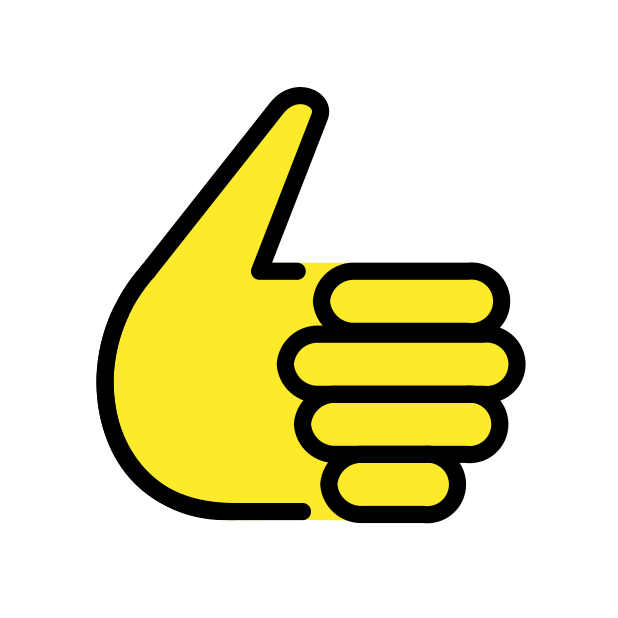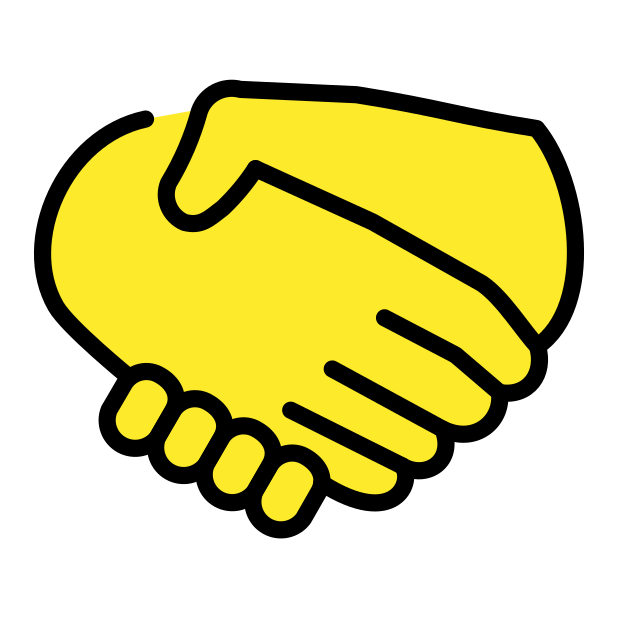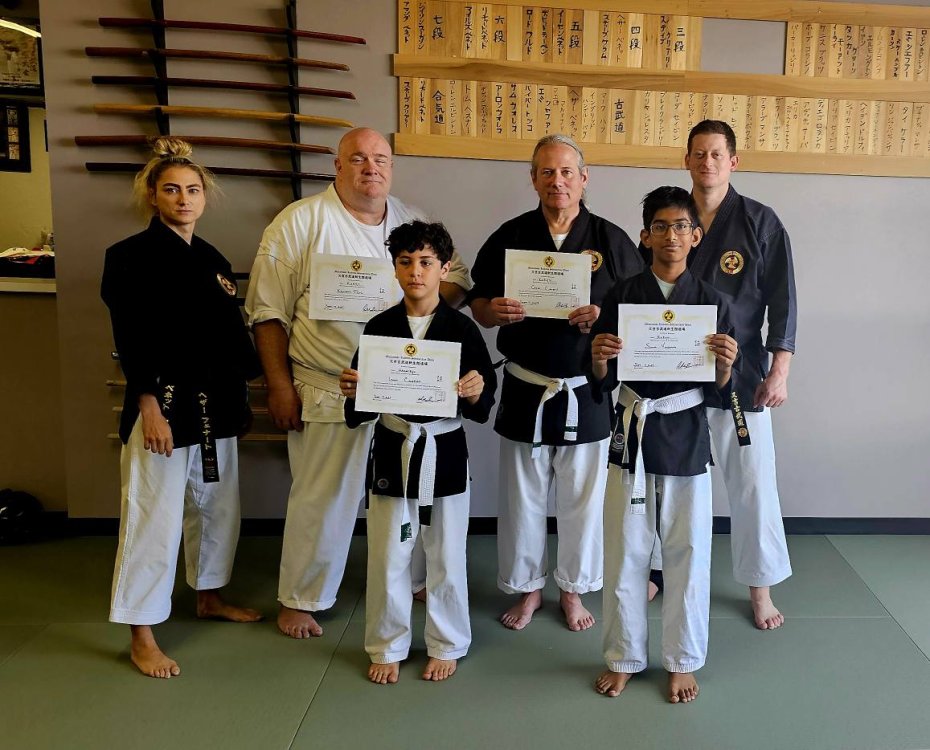
aurik
KarateForums.com Sempais-
Posts
664 -
Joined
-
Last visited
Everything posted by aurik
-
Member of the Month for July 2024: KorroddyDude
aurik replied to Patrick's topic in KarateForums.com Announcements
Congratulations! -
Trying to spark my interest in karate again
aurik replied to Bradlee's topic in General Martial Arts Discussion
There are days where training is easy. There are days where training is hard. There are also days when training just plain sucks. Throughout your training you'll have ups and downs. You'll have days that things just "click", and your understanding of your art jumps to an entirely new level. The thing is, they rarely happen if you don't train through the suck. -
Even after you're gone, whether that be in 5, 10, 20, or even 30 more years, you will continue to have an impact on this world in everyone you've touched. Whether that is your family, friends, students, associates, or those who you influenced on here.
-
WKF Gloves vs. Boxing Gloves vs. MMA Gloves for Karate
aurik replied to Nidan Melbourne's topic in Equipment and Gear
When we spar, adults are only required to wear hand pads. We are encouraged to wear mouthguards, and shinpads + footgear are optional. Students under 16 are also required to wear headgear and footgear. I'm with you, sparring is about learning to get around/past your opponents defenses with light contact. Generally adults should be able to control their techniques so as to not injure their partner. However, in sparring the unexpected often happens (someone steps INTO your attack instead of away from it), so some padding definitely helps avoid injuries. -
Congratulations again
-
We don't use the term English "master" very often. We do have a number of well-defined instructor and shogo titles. For example, one can earn the title of shidoin (apprentice instructor) at 3rd degree after completing a certain number of hours teaching under guidance of an instructor; this allows you to open a school relatively independently (but you still must nominally train under a shihan ). Likewise, you can earn the shihan title (nominally "master instructor") at 5th degree, which allows you to teach independently without oversight. We then have the shogo titles of renshi (generally awarded at 6th dan), kyoshi (awarded at 7th/8th dan), and hanshi (awarded at 9th/10th dan). Again, we rarely use those terms; we generally refer to our CI just as sensei, and if there is another instructor teaching, I'll usually call them <name> sensei to differentiate from our CI. The exception is our CI's dad, who we'll usually just refer to as hanshi.
-
空手の日, "karate no hi", or Karate Day, celebrates the meeting of karate masters on October 25, 1936, where the name 空手, "karate" was officially adopted for the art we know today. It also established the kyu/dan ranking system. In 2005, the Okinawan Perfectural Assembly officially established October 25 as Karate Day to celebrate this anniversary. Each year, karate-ka from around the world gather in Okinawa to celebrate, culminating with a massive group demonstration of kata in Naha, Okinawaa. In fact, the 2016 Karate Day celebration established a Guinness World Record for the most people simultaneously performing a kata. This year, my CI and his wife went to attend the celebrations and to train with other high-ranking instructors in Okinawa. The video of this years' celebrations is posted below. The Uechi-Ryu contingent performs the kata Sanseiryu (三十六) at about 9:40 into the video. My CI is front and center in the contingent for most of that segment.
-
The Official National Hockey League Appreciation Thread
aurik replied to aurik's topic in General Chat
Sad to see the Avs losing to the Blackhawks... of course, the Avs have been struggling a bit this year. Heck, so have my Blues, too -
Exactly. A certain amount of flexibility and diplomacy should be expected. Everyone's situation is slightly different, and understanding their situation definitely helps with the instructor/student and provider/client relationship. It is certainly within your right to treat everyone the same and be firm with everyone. However, keep in mind also that the customers literally pay the bills (whether you're looking to turn a profit or not), so you need to weigh how close you toe the line with each student (and/or parent). Fortunately as an assistant instructor who doesn't deal with the financial side of things, that's something I don't need to worry about.
-
How important is time in rank?
aurik replied to Luther unleashed's topic in Instructors and School Owners
I understand what you're saying. By the time Zach is able to test for his (adult, full) shodan, he will have been a shodan-sho for 4 1/2 years, and a total of almost 10 years training in Uechi-Ryu. Assuming he continues training, he'll be running into the minimum age requirements instead of the TIG requirements. I think for our organization, it's 15 years for shodan, 17 for nidan, and I'm not sure what the minimum age for sandan is. -
"Old man tricks" - I like the sound of that -- that's a lot of what I do when I spar. For example, if someone does a roundhouse kick to my midsection, I'll eat it, grab it, and then step in, give them (what would be) a good solid punch to the midsection, grab them by the gi, step in again and take them down to the mat (again, with good control). I also keep an eye on my opponent's feet - when they step in to deliver a jab, I'll do a quick sweep of their front foot -- like a kouchi gari in Judo. The idea is to land this right BEFORE their foot hits the ground, but they've already committed to the step. If done right, it won't necessarily take them down, but it'll off-balance them enough that you can step in and land a few strikes on them. Also, in our sparring legs are a valid target, so I like going after the front thigh with a low roundhouse kick. The usual defense to that is to lift up the leg in a crane block. Do that once or twice, then step in a bit deeper, and when they raise up for the crane block, follow that roundhouse kick through to take out the back of their opposing thigh. Again, it may or may not take them down, but it'll distract/unbalance them long enough to let you land a few strikes. Do I do these in such a way to hurt my partner, absolutely not. I make sure to never strike at a joint, or put my partner in a position to get injured (bad fall, etc), and I don't strike hard enough to injure. But you know what they say, "old age and treachery wins everytime"
-
Laws surrounding Banned or Prohibited Weapons
aurik replied to Nidan Melbourne's topic in Martial Arts Weapons
In Colorado, the use or possession of nunchaku and throwing stars are specifically banned in public places unless being used in a public demonstration or a class. And they must be stored in an "unaccessible" container. Now to my knowledge, I've never known someone to be prosecuted over this law, but it is on the books. Now I do know that my CI and his wife were once traveling to Okinawa with a layover in Canada. Their bags went through security screening, and the authorities siezed and destroyed their brand new set of purpleheart nunchaku. Even though they were only in Canada for a layover. -
How important is time in rank?
aurik replied to Luther unleashed's topic in Instructors and School Owners
My instructor's philiosophy on belts and ranking is, "the colored belts aren't for you (the student), they're for me (the instructor) - they give the instructor an easily identified reminder as to what part of the curriculum you're at and what is appropriate to be teaching you". So with that mindset, I have absolutely zero problems with TIG requirements. At our school, junior kyu ranks (up to 5th kyu or so) have a 3 month TIG requirement and senior kyu ranks (4th kyu and up) have a 6 month TIG requirement. This is for your average student who attends a minimum of twice per week. Students that only attend once per week will test less frequently. These TIG requirements are set by our organization, and are fairly standard across Uechi-Ryu styles. Kyu gradings are done purely at the local dojo, so technically my CI can adjust TIG requirements slightly depending on the student's circumstances. However, when a student tests for shodan, their entire packet gets sent to our organization, since they will be awarding the dan grading. As such, any discrepancies in TIG requirements will need to be justified. As I mentioned, the belt is a guideline to the instructor to let him/her know what the student is ready to learn. So if a student shows above-average aptitude, then the instructors will recognize this and introduce him/her to more advanced techniques earlier than other students. For Dan-level gradings, the TIG requirement is generally 2 years to test for nidan, 3 years for sandan, etc. If you are an instructor, they can reduce that TIG requirement by 6 months at the discretion of the CI, since instructors are required to teach at least once per week in addition to their normal training. Again, these are guidelines and minimums. Any and all test candidates need to be invited by their supervising instructor to test. Generally the instructor in question will run a "pre-test" evaluation in class the week prior to the testing board to make sure the eligible candidates are ready to test. -
Training Camps and Student Promotions
aurik replied to Nidan Melbourne's topic in Instructors and School Owners
Our CI is very open and welcoming of us attending seminars both by our organization and others. In fact, he frequently brings in outside instructors to our dojo and hosts seminars to give us outside perspectives. He also leads a trip to Okinawa once or twice a year so we have the opportunity to train with senior instructors there. He is a firm believer in the value of learning different ways of doing things, and letting us incorporate that into our own karate. Now as far as testing at such an event goes -- it just wouldn't happen in Uechi-Ryu without the knowledge and/or consent of that student's CI. One organization's senior instructors simply would not test students from another organization, and they would not perform dan gradings of students within their organization without the consent and recommendation of that student's CI. In any case, beyond a certain level (6th dan or so), Uechi-Ryu, at least in the USA, gets to be a really small fellowship, so everyone basically knows (or at least knows of) everyone. Everytime I've visited another school and mentioned who my CI is, they either know him or his dad. Maybe it's because my CI tends to attend (and teach at) a couple seminars every year himself. Now if you had a situation where the CI of the school didn't feel like he had sufficient instructors of grade to run a testing panel for a student (for example, a sandan instructor had a student testing for nidan), I can certainly see how that CI would either invite another senior instructor to visit and run the testing board, or send that student to another instructor to test. In fact, we had a very similar situation at my school a couple years ago. We had a student from Nebraska whose instructor was not senior enough to promote him, so he came to our school to participate in our testing cycle. Now, as others have said, if a student earns rank in another style that's another story entirely. We have a couple students who have dan level ranks in other styles. However, when they attend classes at our dojo, they wear the ranks that they've earned at our school. -
WKF Gloves vs. Boxing Gloves vs. MMA Gloves for Karate
aurik replied to Nidan Melbourne's topic in Equipment and Gear
My wife and I were discussing the procedure yesterday evening. It's a 2-3 hour outpatient procedure, you have significant activity restrictions for 5 days afterwards (no strenuous activity, no driving, careful going up and down stairs), and then you can begin resuming normal activity afterwards. You'll continue to be on blood thinners for about 4-6 weeks afterwards. -
WKF Gloves vs. Boxing Gloves vs. MMA Gloves for Karate
aurik replied to Nidan Melbourne's topic in Equipment and Gear
That's exactly what I'm on. I technically have atrial flutter (which is a form of afib, but easier to treat). I recently spoke with a cardiac surgeon who suggested a surgery to treat it -- basically go in through the femoral vein with a laser and create a small patch of scar tissue which prevents the signals from going haywire. So I'm most likely going to have that done later this year. -
WKF Gloves vs. Boxing Gloves vs. MMA Gloves for Karate
aurik replied to Nidan Melbourne's topic in Equipment and Gear
I mainly avoid sparring right now because I'm on blood thinners, so the potential for excessive bruising is pretty high. -
Do they have ones to fit a 78” bo?
-
WKF Gloves vs. Boxing Gloves vs. MMA Gloves for Karate
aurik replied to Nidan Melbourne's topic in Equipment and Gear
I generally avoid sparring, but when I do, I go for the MMA style gloves -- I am big on grabbing my opponents. -
The Official National Hockey League Appreciation Thread
aurik replied to aurik's topic in General Chat
-
Another round of testing at the dojo and...
aurik replied to aurik's topic in Share Your Testing, Grading, or Promotion
It's been awhile since I posted in here, and in the meantime I've started taking Matayoshi kobudo classes. It's a different experience, using different muscles, and is taking quite a bit to get used to. However, last month I was fortunate to test for (and pass) my board for kukyu. The only firm requirement was that we be able to perform bo no hojo undo dai ichi (first set of basics with the bo), but he also had us demonstrate the first bo kata, tsushi no kun, to gauge where we were. We got some good feedback after the test (for one thing, I need to re-learn how I have been doing my hand pivots on the bo, that's going to take a bit). But in the end we all passed! -
Testing Reflections, 8/1/2024
aurik replied to bushido_man96's topic in Share Your Testing, Grading, or Promotion
Our dojo does things similarly, but with some key differences. First of all, students have to be invited to test. Meaning: there are time-in-grade and attendance requirements, but our CI (or the student's supervising instructor, if they are at a satellite school) will not invite a student to test unless they are confident that the student will pass. Our school has four groupings of kyu ranks: white, yellow, green, and brown; there are three levels within each grouping (except white belts), for ten kyu grades in total. Students who are testing for a yellow belt grade will be required to know the same material; they will all perform the same kata, the same two-person drills, and the same kotekitae exercises. As a student progresses through the yellow belt grade, they'll have added requirements added in (bunkai / kata interpretation), and they will be expected to show a more nuanced unerstanding of the material. The way our instructor performs testing is he'll bring all of the students for a given grouping up to demonstrate their material. He'll have assistant instructors watching groups of students within that grouping so no one instructor is watching too many students. After the group completes, he'll check with the instructors to see if anyone was struggling with the material or made gross errors. In that case, he'll have those students stay on the floor and re-demonstrate the material to give the student a better chance. If the student still struggles, then he'll have the student perform with an instructor (in the event they were having difficulty with a partner). If they still struggle, he may fail them on that part of the test. So each student gets 3 solid chances to succeed, and there are some parts of the test that you can technically fail, but still pass the test, depending on which kyu grade you are testing into. In the years I've been attending the school, I've only seen three students not pass a test. One of them just couldn't get their rights and lefts together under the stress of testing. One of them just had a terrible attitude on the test day (he had a very complicated family situation, and the CI spoke with the kid's parents before failing him), and I don't remember the third reason. Our CI also stresses to students that even if they don't pass today, they can test the following testing cycle (which he usually runs at least one per month). -
And now back to our original programming... This past week I've tried to get back to my original training schedule. Tuesday kobudo followed by Tuesday advanced karate, Thursday kobudo followed by Thursday teaching. Unfortunately, due to some GI issues, I had to skip the Thursday kobudo, but training around health issues is something you have to deal with -- and it's a more often thing the older you get it seems. In our style of kobudo, we start on the bo, followed by sai, then tonfa. I'm starting to get pretty comfortable with the bo (even my massive purpleheart beast). The sai is coming along as well, and the tonkua I'm still having issues with, but improving. In terms of the techniques we learn, I'm feeling really good with the first bo hojo undo, the second one I'm getting familiar with, and the third one I'm still iffy on (I'm not sure when we test on the second or third one, so I'm not worried). I'm also getting pretty comfortable with the sai hojo undo - this is what I'll be tested on in a couple months. The tonkua hojo undo I'm still struggling with, but I won't be tested on that for a long time. I'm also feeling really good about my first 2 kata - tsushi no kun (bo kata) and nicho sai (sai kata). Unlike uechi-ryu, our CI will pretty much teach you anything in kobudo he thinks you're ready for. For example, tsushi no kun isn't a hard requirement until you test for shodan, but he teaches it whenever he thinks you're ready to learn it. The kata itself is mostly the same sequence of hojo undo techniques, with a couple of extra moves sprinkled in for flavor. Likewise, nicho sai follows the same lines. While they're not hard and fast requirements, they are definitely good to know. I also attended our Tuesday advanced class for the first time in awhile -- between stamina issues (the kobudo class tends to wear me out, and I'm still trying to regain my stamina after all of the issues at the beginning of summer). I got to work with David (who recently earned his shihan license) on kotekitae, and this resulted in an "a-ha" moment. One of our fundamental kotekitae sequences is the arm pounding sequence. Partner A steps in with a punch. Partner B steps back performing a chudan barai uke, striking the partner's interior forearm. Partner B then circles underneath the arm with a watari-uke (circle block), maintaining contact with the partner. The drill concludes with Partner B striking Partner A's forearm either with a shuto uchi or a tettsui uchi (chop or hammer fist), depending on preference. Here's the a-ha moment. David is also a 4th or 5th degree in Aikido and has put these two concepts together. If you modify the initial chudan barai uke to "hook" with your wrist at the exact same time Partner A is finishing their extension on their punch, you'll pull Partner A forward, disrupting their balance just enough that they'll have to take a moment to readjust. That little bit of disruption can make all of the difference. That's one of the differences that our CI has mentioned between Okinawan and Japanese styles of karate. In most Japanese styles, you are strongly discouraged from disrupting your partner's techniques. However, in many Okinawan styles, you're expected to disrupt your opponent, especially in 2-person drills, because that disruption makes your techniques more effective if you ever need to actually use them.






